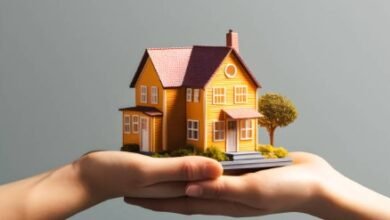Apartment vs House in Pakistan: What Should You Choose in 2025?

Choosing between an apartment and a house is one of the biggest decisions for anyone relocating or making a first-time property investment in Pakistan. With rising urban living costs and shifting lifestyle trends, the choice is no longer just about budget.
It is about how you want to live, what space you need, and what makes sense for your future. So, let’s explore both sides, namely apartment living and house ownership, so that you can make an informed decision based on facts, not just feelings.
What To Know Before You Decide
Finding the right property goes above and beyond picking a floor plan. It usually begins by partnering with quality developers in your area who understand your needs. So, if you live in Pakistan, looking for top builders in Karachi is a good idea when evaluating your options. A strong track record, reliable construction, and after-care services from established firms bring confidence to both apartments and homes.
Now, let’s look at the key factors that play a major role in shaping your decision when you’re stuck in the apartment vs. house dilemma in Pakistan.
1. Cost Of Purchase And Ongoing Expenses
One of the first things people check is price, and the numbers differ. Apartments usually come with a lower upfront cost per square foot than houses.
According to Global Property Guide, average rents per square foot in Karachi are around PKR 61 for apartments and PKR 75 for houses. But houses often bring extra costs in land, utilities, and upkeep.
Apartments generally include shared services like security, maintenance, and common utilities, which can reduce ongoing expenses. That said, houses offer room for future customization and value appreciation, both of which may offset the initial difference.
2. Space, Privacy, And Customisation
Houses typically win on space, inside and out. You may have a garden, a garage, or multiple rooms with fewer shared walls. Apartments make up for it through secure layouts, multistory advantages, and compact efficiency.
If privacy and independence matter most, a house may feel more like home. Apartments, especially in gated communities, can also offer privacy without demanding that you maintain the exterior.
Ultimately, your choice depends on how much space you use regularly and how default floor plans fit your lifestyle.
3. Maintenance And Convenience
Maintenance looks different depending on where you live. In apartment communities, services like security, elevator repair, cleaning of shared areas, and waste disposal are often managed centrally.
Residents contribute through a fixed monthly maintenance fee, which simplifies planning and ensures consistency. This shared approach works well for those who appreciate structure and predictability in managing their living environment.
In houses, maintenance is handled directly by the homeowner. This offers a greater degree of control and flexibility, especially since homeowners choose their contractors, set their own schedules, and decide how to handle repairs or improvements.
Some find this approach more personal and tailored, especially when they enjoy home projects or prefer overseeing details themselves.
4. Rental Yields And Investment Returns
For investors, apartments often perform well in terms of rental income and quick leasing. They attract young professionals and expatriates looking for convenience near offices and city centres.
Houses, on the other hand, often appreciate more due to land value increases. They also offer long-term equity potential, especially in developing neighborhoods where infrastructure is expanding.
Many investors find value in mixing both types in a portfolio, which means using apartments for short-term gains and houses for future resale. Think about whether your priority is immediate income or holding for future gains, and make sure to research vacancy rates and demand in your target area before making a decision.
5. Access To Amenities And Shared Facilities
Amenities can shape the day-to-day experience of living in a property. Many modern apartment buildings offer built-in access to gyms, play areas, community rooms, rooftop terraces, and even co-working spaces.
These features add value, especially for families, young professionals, or anyone who enjoys convenience without having to travel far. Shared amenities also foster a sense of community by creating natural places for neighbors to connect.
In standalone houses, amenities are typically personalized and private. A garden, patio, or home gym can be tailored entirely to your taste. You decide what gets added, expanded, or modified. While this means more planning and investment, it also allows for greater creative freedom.
For example, someone may prioritize a quiet reading corner in the yard or space for outdoor family gatherings.
6. Location And Urban Trends
Urban growth is reshaping property decisions in Pakistan. Cities like Karachi, Lahore, and Islamabad have seen rapid apartment construction to meet rising demand. Apartments are often built in central areas with close proximity to public transit, markets, and job centres, and that makes them ideal for city-focused lifestyles.
Houses are more common in suburban communities, along highways, or in developing societies. People with families often lean toward suburban homes for more space and access to schools, while working professionals prefer apartments near business hubs.
With infrastructure projects underway across Pakistan, including the Karachi Circular Railway revival and road expansions, the location you choose today could look very different in five years.
Considering commute times, development forecasts, and civic amenities can help you make a more strategic choice.
7. Community Living Vs. Personal Independence
Apartment complexes foster a strong sense of community through shared spaces and resident activities. You may meet neighbours in elevators, community halls, or shared gardens. Some buildings even host festivals or community meetings to create more opportunities to connect.
Meanwhile, houses allow for more privacy and independence, which some people value highly. Younger buyers or families may enjoy apartment social ecosystems, while others prefer having their own yard and solitude.
If you value frequent interaction or enjoy community amenities, apartment living offers that environment naturally. On the other hand, if personal space, quiet, and fewer shared rules appeal to you, a house might provide the atmosphere you need.
Reflect on your daily interactions and social preferences when deciding what fits you best.
8. Security And Lifestyle Patterns
Security is often stronger in apartments, with guards, CCTV, gated entrances, and controlled access. Many newer apartment projects include 24/7 monitoring, visitor verification, and emergency response features.
Consequently, if you are comfortable managing standalone security measures, a house can still feel safe. Gated communities also provide a secure environment with similar benefits. In both cases, understanding the neighborhood’s crime rate, access to police services, and general safety record is essential.
Your comfort with local surroundings and your willingness to invest in home security systems should guide your choice. Think about how important convenience is compared to complete control when it comes to safety.
Final Thoughts
There is no single right answer; either a house or an apartment can be the right choice for someone in Pakistan. The best decision depends on your budget, lifestyle, and long-term goals. By weighing cost, space, maintenance, location, security, and adaptability, you can choose with clarity, not confusion.
In 2025’s fast-paced housing market, knowledge matters. Gathering insight from experienced developers and builders in Karachi and reliable market data gives you confidence.
Whether you end up with a compact apartment or a spacious home, choose the option that fits your life now, and the one that can grow with you in the years to come.



